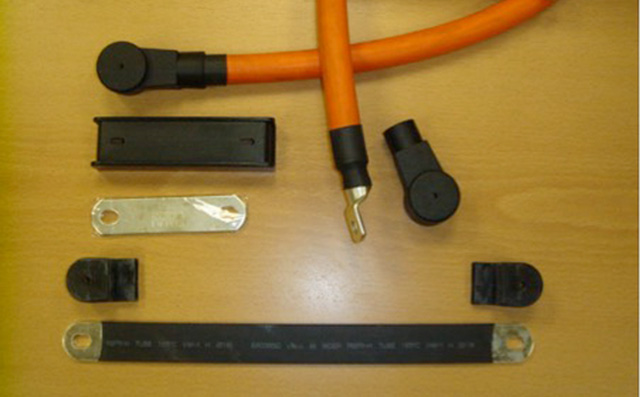
From April 2016 through to May 2016 Fiamm have been in the process refreshing the FLB, FIT and SLA series of VRLA standby batteries, which has included a change in box colour, product codes and updating the battery label. The following offers a description of the changes for each type.
Battery boxes for this type have now changed from solid grey box and lid to a dark blue box and grey lid. In physical size, terminal type, build standard and operational terms the battery is equivalent and completely compatible with previous models. To identify the new models the suffix of ‘P’ has now been included into the product code, for example the ‘12FLB350’ has now been rebranded as the ‘12FLB350P’.
Continue Reading...

This article discusses the different type of connectors used for batteries in float standby applications. It does not consider traction batteries or those used for cycling applications but some of the practices can be translated to all battery types. The document discusses inter monobloc, inter cell, inter row, inter tier and connectors from the last cell to the transition box, fuse box, or main switch. It does not consider connections from the transition box etc to the load. However, it does make reference to these connections in respect of volt drop.

Continue Reading...

This article considers ohmic measurements as a means of identifying rogue cells and monoblocs of VRLA AGM and GEL product installed on float standby systems. For batteries operated on cycling applications there are better ways of identifying rogue cells or the end of life for the complete battery. For vented product, the established method of visual inspection, float voltages, specific gravities and ultimately discharge testing are more reliable than predictions based on ohmic measurement.
Searching the internet will show that there are many articles discussing battery ohmic measurements. Some will be written by operators such as telecommunication or UPS companies whilst others will be from instrument manufacturers and papers written by battery manufacturers are also available. Rarely is an article written with the intent of giving an overview of the subject and guidance for the interpretation of the results obtained and actual case examples. This article will show that whilst ohmic measurements may be used to identify rogue cells or monoblocs, the results can also be very misleading and may give the operator a false sense of security, or condemn product that is still fit for purpose.
Continue Reading...

This article discusses the float voltage characteristics of VRLA AGM and VRLA GEL cells and batteries in standby power applications when charged using commercially available battery charging systems having a constant voltage characteristic with limited current output.
Batteries in standby applications require a charging voltage that is sufficiently high to recharge following a discharge, and maintain a fully charged condition without overcharging the battery. This voltage needs to be regulated for different operating temperatures but for simplicity, this document considers operating at 20oC. The principals and overall characteristics shown in this document can be considered to apply for operating temperatures of between 0oC.and 40oC.
Continue Reading...

The history of the VRLA battery goes back to the early 1930’s. However, the term VRLA was not introduced until the 1980’s. Originally they were known as “sealed” batteries but following a number of serious incidents the more appropriate term of Valve Regulated Lead Acid (VRLA) battery took over.
Today we have two distinct types of VRLA batteries; those with gelled electrolyte (GEL) and those with absorbent glass mat (AGM) separators, which hold most of the acid.
Continue Reading...

This article discusses the gasses given off by Industrial Batteries and how to manage these gasses. The document primarily considers Standby Batteries but the overall principals apply equally to lead acid and nickel cadmium types both vented or VRLA.
Under normal operating conditions, the gasses evolved are hydrogen (H) and oxygen (O). However, under extreme conditions other gasses may be produced such as hydrogen sulphide (H2S). Some strange gasses are also given off in very small quantities such as carbon dioxide (CO2). This document only considers the evolution of hydrogen, oxygen and hydrogen sulphide.
Continue Reading...






